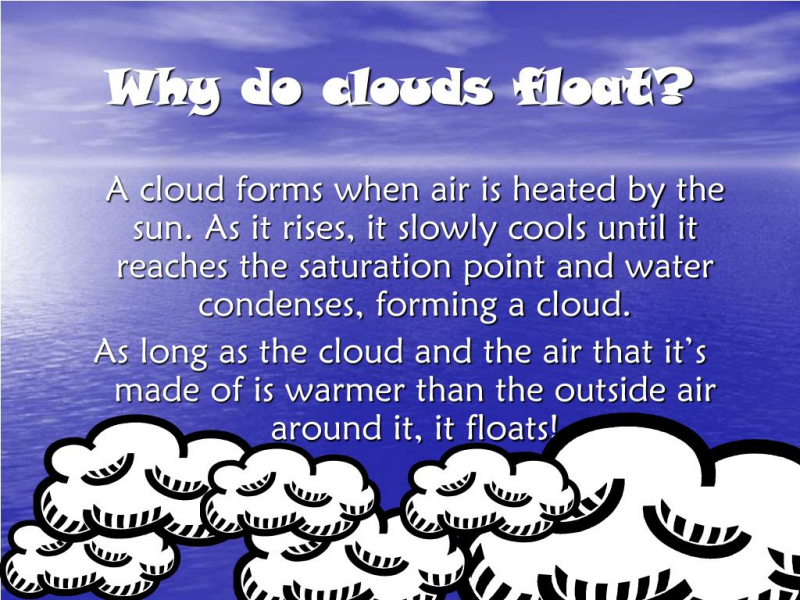How do clouds float?
Clouds float for numerous reasons. For starters, the droplets in a cloud are tiny. Very little. A typical cloud water droplet is only 20 micrometers wide. That is half the width of a normal human hair and roughly the same width as a dust particle. Despite the fact that dust is heavier than the surrounding air, a dust particle is so little that it may float in the air for a long time before descending. Water droplets in the air act similarly to dust.
The second reason clouds may float in the air is that there is a steady flow of warm air ascending to meet them: the warm air pushes up on the cloud, keeping it aloft. Third, clouds retain more heat than the surrounding air because they absorb more of the sun's energy.
Clouds can not float indefinitely; when the surrounding air warms, it becomes capable of containing the cloud's moisture as vapor, and the cloud vanishes. And occasionally, the cloud grows so huge and wet that the water droplets begin to attach to each other and grow larger and larger. The water droplets enlarge to the point that they no longer behave like dust particles. Droplets start to fall. If you gaze up at this type of cloud, your face will be wet: those drops are now referred to as "rain", and you should get indoors.
















